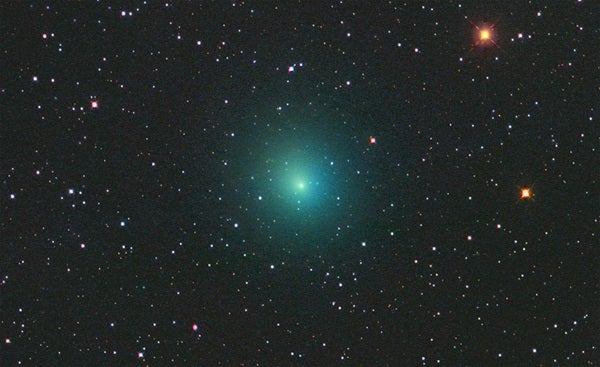Comet C/2007 W1 (Boattini) continues to brighten faster than predicted, and has now reached about 6th magnitude. That’s bright enough that you can see it without optical aid under excellent conditions, and it should be a relatively easy target through binoculars. The comet currently lies low in the southwestern sky after darkness falls, but it won’t stay there long.
Your best chance of seeing it clearly will come once the nearly Full Moon exits the early evening sky. That makes May 21 the first decent opportunity. On that evening, twilight falls around 10 P.M. local daylight time for those at 40° north latitude, and the Moon rises about 15 minutes later. Fortunately, the Moon rises around 50 minutes later each succeeding night, so the window of opportunity opens wider later in the week.
Comet C/2007 W1 (Boattini) currently lies among the background stars of the southern constellation Pyxis the Compass. It lies at about the same altitude at the bright star Procyon in Canis Minor. Procyon lies due west as twilight fades, while the comet stands in the southwest, some 40° away. And Procyon shines about 100 times brighter than the comet.
As with all the other objects now hanging low in the west after sunset, Boattini will soon succumb to the Sun’s glow. You shouldn’t expect to see the comet after May 25. On the 26th, it will set before 10 P.M., before twilight concludes. If you live in the Southern Hemisphere, the view should last through June’s first week. By early July, the comet will reappear in the predawn sky. It should glow around 5th magnitude then, but the possibility exists that it could be brighter.
Astronomer Andrea Boattini discovered this comet November 20 as part of the Mt. Lemmon survey — a search program designed to locate near-Earth asteroids.










